Want to know about Sago Palm Care and Growing Sago Palm in Containers? Here is the best guide you’ll ever find!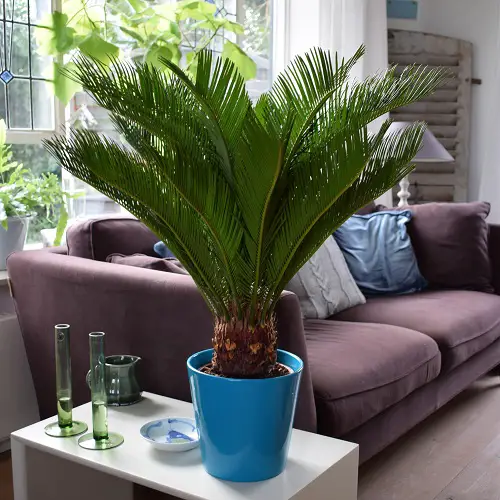
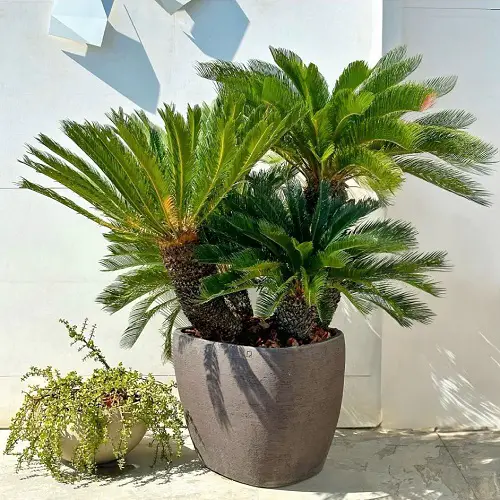
Sago Palm Care and growing involves tending to the unique needs of the plant, ensuring proper watering, light, and maintenance for its healthy growth. Here’s everything you need to know!
Botanical Name: Cycas revoluta
USDA Zone: 8-11
Sago Palm Information
Origin
- Historical Roots: The Sago Palm, scientifically known as Cycas revoluta, is native to the southern regions of Japan, particularly the Ryukyu Islands. It has been a part of the natural landscape in these areas for centuries.
- Cultural Significance: The Sago Palm, native to Japan, holds cultural significance as a symbol of longevity, strength, and resilience. Its historical uses for food and medicine, along with its enduring presence in gardens and landscapes, have made it a revered botanical emblem in Japanese culture.
Note: Did you know? The plant’s historical roots can be traced back to ancient times, as it is often considered a “living fossil” due to its resemblance to plants that existed during prehistoric periods.
Check out the Best Palm Trees in Florida here
Flowers
Unlike traditional flowering plants, Sago Palms do not produce showy or colorful flowers. Instead, they reproduce through the development of cones.
Fruit
- Shape and Size: The Sago Palm produces cone-like structures as its fruit. These cones are usually large and cylindrical, with a length ranging from about 6 inches to 1 foot (15 to 30 cm). The shape of the cone is often described as elongated and somewhat tapered.
- Color: The color of the Sago Palm fruit cone varies as it matures. Initially, the cones are typically green and can turn shades of yellow or brown as they ripen. The color change signifies the progression from an immature stage to a mature, seed-bearing state.
- Interior: The interior of the Sago Palm cone contains numerous seeds, which are nestled within the scales of the cone. These seeds are not the traditional fleshy or juicy fruit that one might expect. Instead, they are hard and nut-like.
Important: The cone or fruit of the Sago Palm should not be eaten, as it contains cycasin, a toxic compound that can be harmful if ingested. Cycasin is a glycoside that can lead to severe health issues if consumed by humans or animals.
Propagating Sago Palm
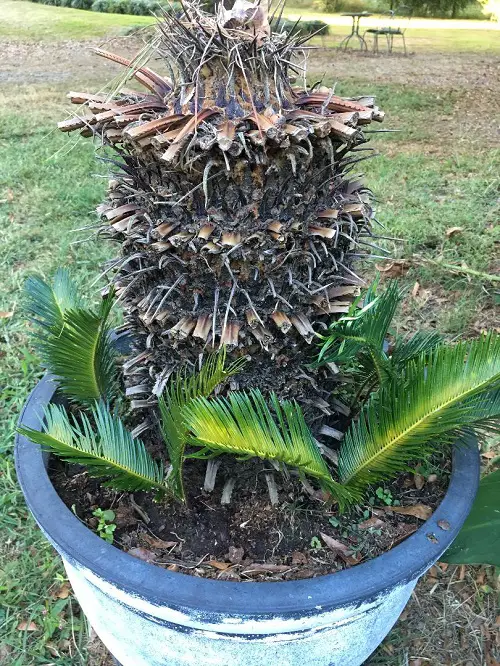
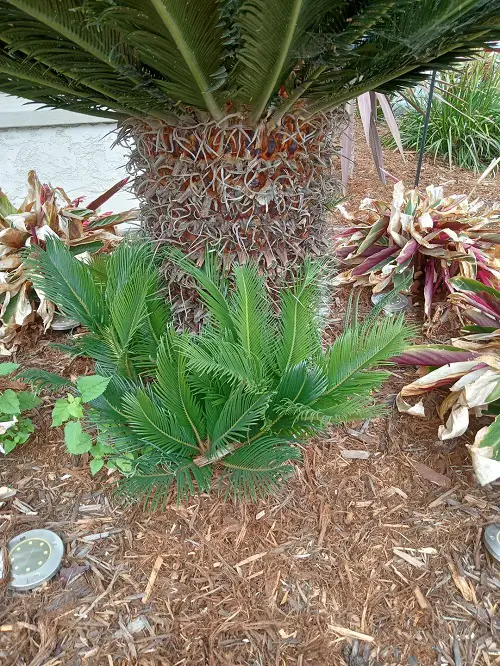
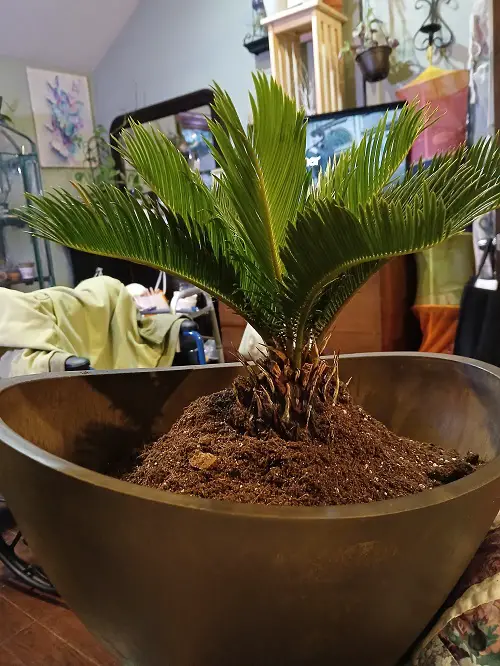
Ways to Propagate Sago Palm
- Offsets
- Seeds
- Division
- Corm Division
- Bulbils
- Tissue Culture
The Most Popular and Reliable Method: Offsets
Propagating Sago Palms from offsets is generally the easiest and most reliable method, as offsets are self-sufficient plants with established roots, resulting in faster growth and proven success.
King Palm Tree Care and Best Varieties
Steps to Grow Sago Palm from Offsets
- Select Healthy Offset: Choose a well-developed, healthy offset that has its own set of roots and leaves.
- Prepare Pot or Planting Site: Use a well-draining potting mix or choose a planting site with good drainage.
- Gently Remove Offset: Carefully detach the offset from the parent plant using clean, sharp tools.
- Allow to Dry: Let the offset dry and callous for a day or two to prevent rotting.
- Plant Offset: Plant the offset in the prepared pot or planting site, ensuring the roots are covered with soil and the top is above the soil surface.
- Water Moderately: Water the newly planted offset moderately, allowing the soil to dry slightly between waterings.
- Provide Indirect Light: Place the potted offset in a location with bright, indirect sunlight.
- Monitor Growth: Keep an eye on the offset’s growth and water as needed, avoiding overwatering.
As the offset grows, consider transplanting it to a larger pot to accommodate its size. Sago Palms are slow-growing, so be patient and allow time for the offset to develop into a mature plant.
Advantages of Propagating Sago Palm from Offsets
- Ease of Separation: Offsets, also known as “pups,” are natural growths that emerge at the base of mature Sago Palm plants. They are essentially small, self-sufficient plants that can be gently separated from the parent plant without causing significant damage.
- Established Roots: Offsets already have their own root systems, which increases their chances of successful transplantation and growth once separated.
- Faster Growth: Since offsets are already independent plants, they tend to establish themselves more quickly than methods involving seeds or tissue culture.
- Suitable for Beginners: This method is suitable for beginners and doesn’t require specialized equipment or advanced horticultural skills.
Choosing a Container for Sago Palm
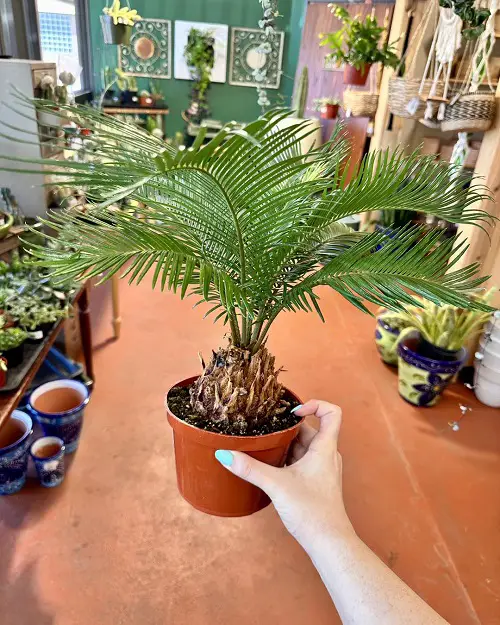
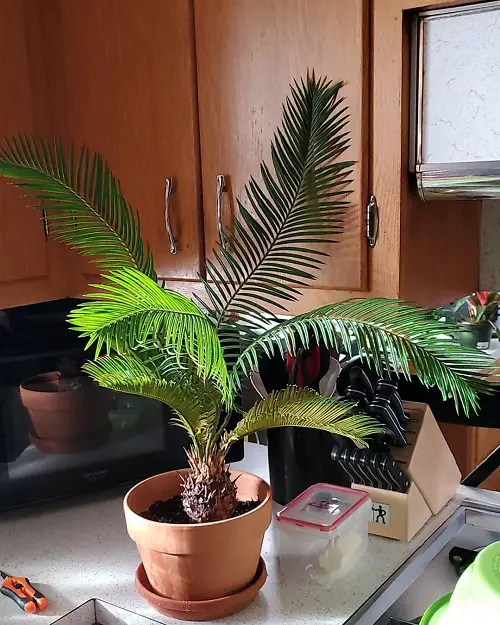
Size
- Seedling Stage: Start with a small pot, around 4-6 inches in diameter, to provide ample space for initial growth.
- Juvenile Stage: Transition to a slightly larger pot, approximately 8-10 inches in diameter, to accommodate increasing root size.
- Mature Stage: For fully grown Sago Palms, use a larger container, around 12-16 inches or more in diameter, ensuring stability and room for the developed root system.
Material
Choose a container made of durable materials like clay, plastic, or fiberglass. Clay pots allow for better air circulation and water evaporation, while plastic and fiberglass options are lightweight and retain moisture more effectively. Consider the aesthetic and practical qualities of each material.
Drainage
Prioritize containers with drainage holes at the bottom to prevent excess water from pooling around the Sago Palm‘s roots. Adequate drainage is essential to avoid waterlogged soil, which can lead to root rot and other health issues for the plant. If a container lacks drainage holes, consider adding them or using a well-draining inner pot.
Here are Plant Pot Sizes from Inches to Gallon
Requirements for Growing Sago Palm
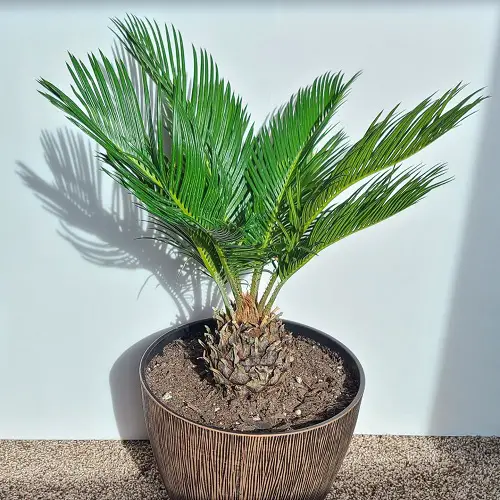
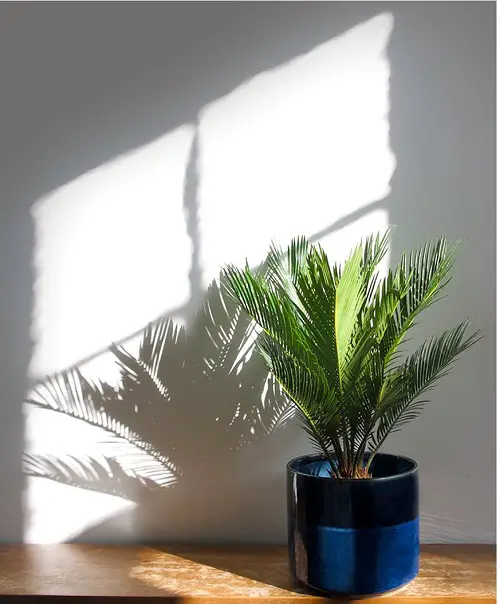
Sunlight
- Intensity: Sago Palms thrive in bright, indirect sunlight. They can tolerate some direct sunlight, especially during the morning hours, but they should be protected from intense midday sun to prevent sunburn and leaf damage.
- Protection: Provide protection from harsh afternoon sunlight, especially in warmer climates, by placing the Sago Palm in a location that offers filtered or dappled light. Consider using shade cloth or placing the plant under taller trees or structures to shield it from excessive sun exposure.
Soil
- Type: Sago Palms thrive in well-draining soil that is slightly sandy or loamy. Avoid heavy clay soils that retain excessive moisture, as they can lead to root rot.
- pH Level: Maintain a slightly acidic to neutral soil pH range of 6.0 to 7.0 for optimal Sago Palm growth. This pH range supports nutrient availability and prevents nutrient deficiencies.
- Fertility: Provide moderately fertile soil with good organic content. Amending the soil with well-rotted compost or organic matter during planting can enhance fertility and contribute to healthy growth.
- Depth: Plant Sago Palms at a depth where the top of the root ball is level with the soil surface. Avoid planting too deep, as this can lead to moisture retention around the roots and potential rot issues.
Here are the best recipes to make the perfect growing medium for your plants
Water
- Frequency: Water Sago Palms thoroughly but infrequently. Allow the top inch or two of the soil to dry out between waterings. During the growing season (spring and summer), water approximately every 1 to 2 weeks. Reduce watering in the dormant season (fall and winter) to prevent over-moistening the soil.
- Method: When watering, apply water evenly across the root zone. Water the soil around the base of the plant rather than directly onto the foliage. Use a soaker hose, watering can, or a gentle stream from a hose to avoid creating compacted soil or damaging the leaves. Ensure that the pot or planting area has proper drainage to prevent waterlogging.
Temperature
- Hardiness: Sago Palms are typically hardy in USDA hardiness zones 8 to 11. They can tolerate mild cold spells, but it’s best to provide protection or bring them indoors if temperatures drop near freezing.
- Humidity: Sago Palms can adapt to a range of humidity levels, but they generally prefer moderate humidity. In drier indoor environments, occasional misting or placing the plant’s pot on a tray of water and pebbles can help elevate humidity levels.
- Tolerance: Sago Palms exhibit good heat tolerance and can withstand high temperatures, especially when provided with proper watering and shade during the hottest parts of the day. However, they may struggle in extremely high temperatures combined with low humidity.
Sago Palm Care
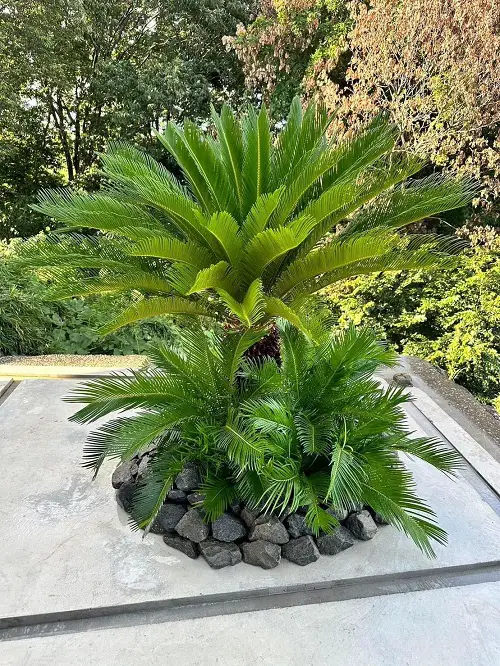
Fertilizer
In-Ground Planting
- Fertilizer: Fertilize in-ground Sago Palms during the growing season (spring and summer) every 2 to 3 months. Reduce or stop fertilization in the dormant season (fall and winter).
- Type of Fertilizer: Use a balanced, slow-release granular fertilizer with an N-P-K ratio of around 8-8-8 or 10-10-10. Alternatively, you can opt for a specialized palm fertilizer that contains micronutrients.
- Method: Sprinkle the granular fertilizer evenly over the soil surface around the plant’s drip line, avoiding direct contact with the trunk. Water the area thoroughly after applying the fertilizer to allow it to dissolve and reach the roots.
13 Things that Come from Your Blender that Can Fertilize Your Plants
Container Planting
- Frequency: Fertilize potted Sago Palms every 2 to 3 months during the growing season. Reduce the frequency to once every 4 to 6 months in the dormant season.
- Type of Fertilizer: Use a water-soluble balanced fertilizer formulated for palms or general-purpose plants. Choose a fertilizer with a balanced N-P-K ratio, along with micronutrients.
- Method: Dilute the water-soluble fertilizer according to the manufacturer’s instructions. Water the Sago Palm thoroughly with the diluted fertilizer solution, ensuring that the soil is evenly moistened. Avoid over-fertilizing, as it can lead to nutrient imbalances or burn the plant’s roots.
Special Considerations
- When fertilizing Sago Palm, it’s crucial to avoid over-fertilization due to its slow growth rate.
- Opt for slow-release granular fertilizers for a steady nutrient supply and watch for signs of nutrient deficiencies like yellowing leaves.
- Choosing fertilizers addressing specific deficiencies, particularly those with micronutrients, ensures the plant’s health and balanced growth.
Mulching
Mulching is beneficial when growing Sago Palms. Apply a layer of organic mulch, such as bark chips or compost, around the base of the plant, extending to the drip line. This helps conserve moisture, suppress weeds, and maintain a more stable soil temperature.
Ensure the mulch is a few inches deep but avoid piling it against the trunk to prevent potential rot. Regularly replenish the mulch as it decomposes to continue providing these advantages and promote overall plant health.
Growing Areca Palm Indoors | How to Grow Areca Palm
Pruning
As you know already, Sagos grow at a snail’s pace. Which means regular pruning is not required. Just remove the dead, sickly leaves or pluck the fruit and flower stalks, leaving perfectly green foliage intact.
Snip off leaves close to the main trunk. If you want heavy pruning, cut off all the fronds except the topmost ones. And whatever you do, keep the Sago Palm leaves that are angled at ten and two o’clock untouched.
Pests
- Scale Insects: These small, immobile insects attach themselves to the leaves and stems, sucking out plant juices and causing yellowing or discoloration.
- Mealybugs: Mealybugs feed on plant sap and leave behind a cottony residue. They can weaken the plant and make it susceptible to other issues.
- Spider Mites: These tiny arachnids feed on plant cells, causing stippled leaves and webbing. They thrive in dry conditions.
- Whiteflies: Whiteflies feed on plant juices and excrete honeydew, attracting sooty mold and weakening the plant.
- Thrips: Thrips damage leaves by puncturing them and sucking out the contents, leading to distorted growth and silvering of the foliage.
- Caterpillars: Certain caterpillar species may feed on Sago Palm leaves, causing physical damage.
Diseases
- Sooty Mold: Often a result of cycad scale infestations, sooty mold appears as a black, powdery substance on the leaves and stems.
- Fusarium Wilt: This fungal disease can lead to yellowing, wilting, and death of fronds, ultimately killing the plant.
- Cycad Aulacaspis Scale (CAS): A different type of scale insect that damages the plant by feeding on its sap and secreting a sticky substance.
- Root Rot: Overwatering or poorly drained soil can lead to fungal root rot, causing the plant to decline.
FAQs
1. When to Repot Sago Palm?
Your plant will give you clues. If you notice roots emanating from drainage holes, water taking an alarming amount of time to trickle down the holes, the container feeling unusually heavy, or the plant becoming thirsty now and then, you know it’s time to repot!
If summers are short where you live, repot in the spring. In warmer regions, though, any time of the growing season is a good time. However, if your sago starts to outgrow its container, it’s best to repot immediately rather than waiting for Mother Nature’s approval.
2. How to Repot Sago Palm?
Transplant Sagos in containers that are deeper than they are wide. That way, the roots will have more room to spread. Follow these steps to transplant:
- Angle your current pot sideways and clasp the base of the palm in one hand.
- Position the other hand on the rim of the pot and develop tension.
- The plant should come out with a slight pull; if it doesn’t, try coaxing it out with a gentle tug.
- Once free, plant it in the new pot and pack it in the potting mix.
- Water thoroughly and shift the pot to the desired spot.
Repotting Tip: While repotting, plant the Sago Palm a bit above the soil line to avoid the accumulation of water around the base of the trunk.
Neanthe Bella Palm Care | How to Grow Parlor Palm Indoors
3. Are Sago Palms Toxic?
Sago Palms are notably toxic plants, containing a range of harmful compounds that can pose serious risks to humans and animals if ingested. The entire plant, including the seeds, leaves, stems, and roots, contains a toxin called cycasin.
Eating any part of the Sago Palm, including the cone and its seeds, can result in symptoms such as nausea, vomiting, abdominal pain, diarrhea, and in severe cases, liver damage or even death. You should exercise caution and avoid consuming any part of the Sago Palm plant. And keep toddlers and pets away from these.

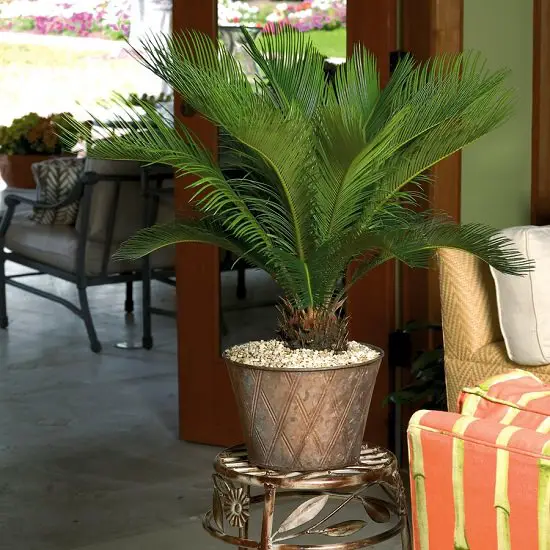
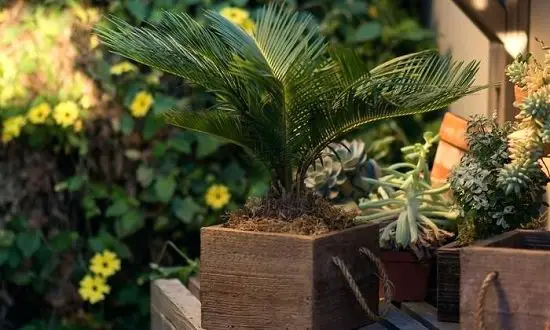
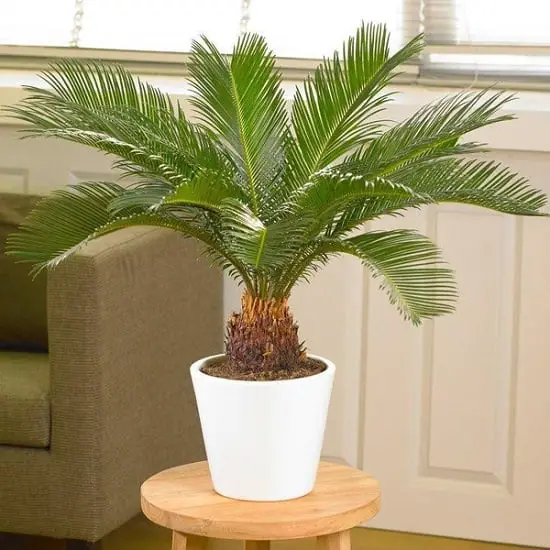

Very informative article. I have 18” tall sago palm, the tips of it’s leaves are turning yellow. Please suggest what should be done.